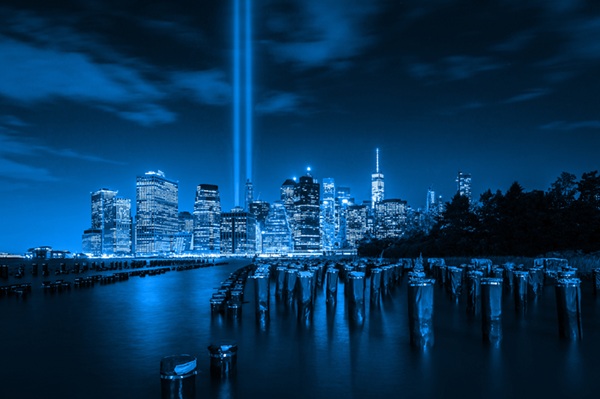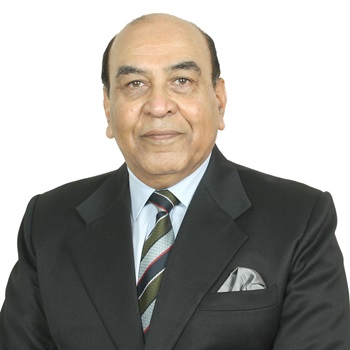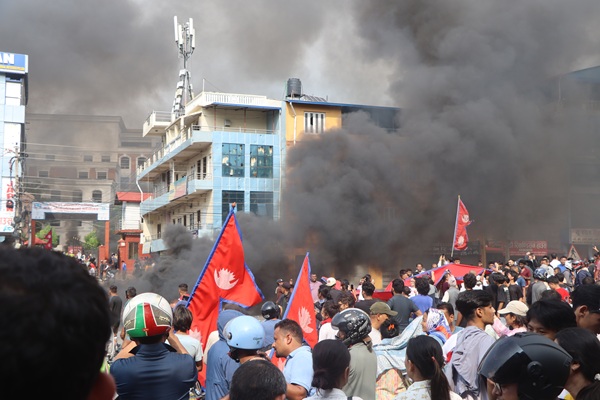.png)
The Shifting Landscape of Global Terror
Two decades and more after 9/11, trans-national terrorism has declined in intensity but not in relevance. From Kashmir to Gaza, the definition remains elusive, and the threat ever-evolving


By Lt Gen Syed Ata Hasnain (Retd)
Lt Gen Syed Ata Hasnain is a former Commander of India’s Kashmir Corps and Chancellor of the Central University of Kashmir.
September 11, 2025 at 6:17 AM IST
As the world marks the 24th anniversary of the September 11 attacks, the question of what truly constitutes terrorism remains unsettled. Despite three decades of international effort, there is still no globally accepted definition. The dilemma persists between those who see terrorism as a crime against humanity and those who defend violence under the adage, “one man’s terrorist is another man’s freedom fighter.”
Even within militaries, the terminology has shifted. In the Indian Army, for instance, those who fought against us, whether Pakistan-sponsored insurgents in Kashmir or the LTTE in Sri Lanka, were once uniformly described as “militants.” It was during the Kargil conflict of 1999 that the term “terrorist” became the norm, reflecting a global hardening of perception, but no definition.
The Poor Man’s War
Traditionally, terrorism was considered the weapon of the weak. It was fought with crude arms, minimal financial resources, and was sustained largely by ideology—political or religious. The hijacking wave of the 1960s and 1970s, associated with Yasser Arafat’s PLO, marked the early modern phase of international terrorism.
The 1980s marked a decisive turn. The Soviet invasion of Afghanistan gave rise to a movement spearheaded by the so-called transnational Mujahideen. What ultimately followed was the emergence of Al Qaida, arguably the world’s first global terrorist brand. Its reach, sophistication, and willingness to strike at symbolic targets elevated terrorism into a new era. The 1998 bombings of US embassies in Nairobi and Dar es Salaam underscored the growing threat.
Meanwhile, Pakistan had perfected the art of using terrorism as an instrument of statecraft. From 1987 onward, it sponsored a proxy war in J&K, using religious radicalisation and cross-border infiltration as key tools. At its peak, 3,500 fighters operated in the Valley, with recruitment pipelines running through madrassas, rallies, funerals, and Friday prayers. Terrorism in J&K became the prototype of hybrid conflict—blending militancy, propaganda, and LoC-based operations into a persistent sub-conventional war.
The Expansion
Through the 1990s and early 2000s, terrorism proliferated in the Middle East, East/West Africa, and parts of Central and Latin America. Southeast Asia, particularly Indonesia, the Philippines, and Thailand, experienced its own fairly persistent cycles of violence. Then came 9/11. The attacks catapulted terrorism to the epicentre of global security concerns. The US-led intervention in Afghanistan and the invasion of Iraq in 2003 proved catalytic. Both conflicts, hugely costly in blood and finances, unintentionally gave new life to terrorist networks. Terrorism, once localised, had gone global.
The nexus between narcotics and terror financing also became increasingly deeper. Drug routes doubled as channels for arms and money laundering proliferated, sustaining groups from South America to Central Asia.
The Rise of ISIS
The mishandling of post-war Iraq from 2003 onwards sowed the seeds for the rise of one of the most fearsome terrorist organisations of the modern era; the Islamic State of Iraq and Syria. Born from remnants of the Baathist party and the dismantled Iraqi Republican Guard, ISIS shocked the world with its brutality and state-building ambitions. At its height, it controlled swathes of Iraq, Syria, and the Levant.
Unlike earlier groups, ISIS fought not only as a terrorist network but also as a conventional force—capturing territory, managing finances, and inspiring affiliates from Africa to Southeast Asia. Its propaganda machine radicalised disillusioned youth across Europe, often immigrants fleeing the Syrian conflict, fuelling a new wave of attacks in Paris, Brussels, London, and Berlin from 2015 onwards for almost two to three years.
Iran, too, demonstrated how terrorism could be weaponised as state policy. Sponsoring Hezbollah and Hamas from the late 1980s onward, it pioneered the militant groups against Israel without direct confrontation. Hezbollah in particular evolved into a quasi-army, capable of contesting Israeli forces conventionally, demonstrated in 2006, until its leadership was decimated in targeted Israeli strikes by 2024–25.
New Terror Template
Elsewhere, Chechnya and Dagestan illustrated how separatist struggles could morph into terrorist campaigns. In Europe, the refugee crisis of the mid-2010s overlapped with ISIS propaganda, creating fertile ground for radicalisation among alienated youth.
But cycles of terror are not permanent. ISIS’s defeat in Mosul in 2018 marked a turning point. Bereft of territory, the group attempted to relocate to Sri Lanka, Bangladesh, India, and even the Philippines, notably in Marawi, but failed to replicate its earlier success. Eventually, it found a foothold in northern Afghanistan, joining a crowded field of extremist groups coexisting uneasily in ungoverned spaces.
A Pause, Not an End
Two other factors contributed to the downturn in global terrorism. The first was the COVID-19 pandemic, which disrupted mobility and financing networks. The second was the US withdrawal from Afghanistan in 2021, which, though controversial, temporarily reduced the scale of international jihadist activity.
Since then, the level of global terrorism has comparatively declined, with one glaring exception: the Hamas-led October 7, 2023 attacks on Israel and the spate of attacks in J&K in India in 2023-25. In the J&K scenario 2019 had witnessed the Pulwama attack which saw the suicide bombing of a CRPF bus carrying 40 CRPF policemen. It sparked the second of the cross-border responses by India in February 2019. The first was after the Uri terror attack in September 2016.
Looming Threat
The ongoing war in Gaza since Oct 7, 2023 may well shape the next cycle of global terrorism. Israel’s military campaign has resulted in massive civilian casualties, which many describe as collective punishment or even genocide. History teaches us that subjugating a population by force breeds greater long-term resistance, not submission.
In contrast, India’s counter-terrorism model in J&K illustrates another path. By conducting precise operations against terrorists while avoiding civilian targeting, even at the cost of higher military casualties, India has gradually integrated J&K into the national mainstream. The lesson is clear: counter-terrorism that prioritises civilian protection is more sustainable than strategies built on overwhelming force. In US parlance this strategy is more akin to counter-insurgency.
The New Frontier
An alarming new chapter in terrorism is emerging, driven not by ideology alone, but amplified through technology. Terrorist groups now exploit cyber networks, space assets, drones, AI, chemical warfare, and improved IEDs. Importantly, the internet has become a platform for education, training, awareness, and recruitment.
The ultimate threat remains the possibility of an odd terrorist group acquiring nuclear weapon capability of the suitcase bomb variety. The chilling possibility remains of use of tactical nuclear weapons with sub‑kiloton yield. While terrorists acquiring such a device remains exceptionally difficult due to material security, the theoretical threat endures, as does the concept of “dirty bombs” or radiological dispersal devices. There is no established evidence of such a capability currently existing.
Propaganda is now powered by AI-generated audio-visual content, avatars, and deepfakes—tools ISIS and others use to radicalise and mobilise recruits, often with sophisticated realism. Drones and unmanned aerial vehicles have evolved from surveillance tools to weapons used to drop explosives or conduct camera reconnaissance in remote terror operations.
The fusion of AI and automation may soon enable “slaughterbot” swarms or hijacked self-driving vehicles to commit mass-casualty attacks without direct human input. In 2016-18, Europe did briefly witness the use of manned automobiles ramming crowds as acts of terror vengeance.
Meanwhile, the redesign of Improvised Explosive Devices, including remote-triggered Radio-Controlled IEDs, has made lethal attacks more concealable and precise.
As we reflect on 24 years since 9/11, terrorism remains a protean threat, shifting in form, geography, and ideology. What has changed is its scale, its financing, and its relationship with technology and global politics. What has not changed is the ambiguity of definition. Until nations can agree on a universal framework to define and address terrorism, it will remain suspended in the grey zone between crime and politics, between insurgency and ideology.
The next cycle of global terror may already be germinating—in Gaza, Afghanistan, or elsewhere. The lessons of the past two decades should not be forgotten: terrorism is dynamic, deeply political, and nearly impossible to eradicate without addressing its roots. In the Indian subcontinent the deep threat of extremism on both our flanks cautions us regarding its potential.
Since terrorism usually follows the cycle of the birth and expansion of extremism, it needs deep situational following with an array of interest groups from the world of academia, intelligence, the military and police forces besides those deeply involved with influence operations and strategic communication.



